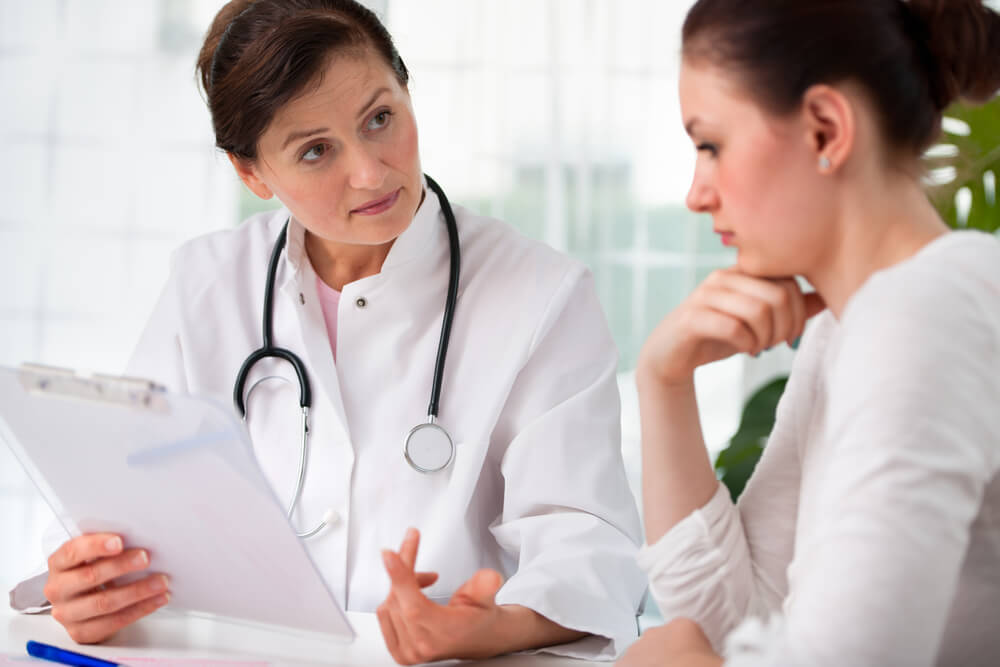POI, or primary ovarian insufficiency, can be defined as a gynecologic condition that develops when a woman’s ovaries fail earlier than they should. The ovaries are small glands on either side of the uterus, and they are responsible for producing and releasing eggs during ovulation. The ovaries also produce hormones that play crucial roles in several essential bodily functions, including pregnancy and menstruation.
Usually, egg production stops in menopause or around the age of 51. Primary ovarian insufficiency happens abruptly for some women, with periods suddenly stopping. For others, the issue is progressive, following years or months of irregular periods.
In this article, our expert team prepared a brief outline of everything you need to know about the condition and how it can contribute to female infertility.
About POI
The condition was previously called premature ovarian failure; however, lately, the scientific community has discovered that women with POI are able to experience intermittent ovulation. This means that female infertility isn’t guaranteed, and patients with the condition may still release eggs and get pregnant. As a matter of fact, generally, 5% to 10% with the disease will experience spontaneous pregnancy without infertility treatment. Because of this, some experts call the condition “decreased ovarian reserve.”
How Common Is Primary Ovarian Insufficency?

This rare condition affects only around 1% of women between 15 and 44. It can develop both in women who had children or still haven’t been pregnant, but it’s the most prevalent in women over 30.
The condition causes estrogen deficiency or low estrogen levels, which may produce side effects and symptoms similar to menopuase, like decreased libido, hot flashes, mood changes, and increased risk for other conditions such as heart disease and osteoporosis.
Many patients with the condition also experience female infertility, but fortunately, with adequate fertility treatment and medications, women can become pregnant even with POI.
Causes and Symptoms
In most cases, healthcare experts don’t exactly know what causes primary ovarian insufficiency, but some research shows that there’s a hereditary component in one-third of POI cases.
Other causes may include the following:
- Addison disease, thyroid disease, rheumatoid arthritis, and other autoimmune disorders
- Chemotherapy and radiation may also cause POI
- Turner syndrome, Fragile X syndrome, and other genetic conditions
- HIV or mumps infections
- The surgical removal of the uterus (hysterectomy)
- Prolonged exposure to toxins, chemicals, pesticides, and cigarette smoke
Regarding signs and symptoms, some patients may experience nothing. Still, the most obvious signs of the condition are missed and irregular periods. Other signs may include the following:
- Difficulty getting pregnant
- Decreased libido
- Irritability
- Vaginal dryness and painful intercourse
- Night sweats
- Hot flashes
- Dry eyes
- Difficulty concentrating
Diagnosing Primary Ovarian Insufficiency
Healthcare providers will most often perform pelvic and physical exams and ask the patient about their medical history. They will ask about the patient’s menstrual cycle, birth control methods, and previous pregnancies. The more info the doctors know, the more efficiently they can diagnose the condition.
They may also order blood tests to look for issues with prolactin and FSH hormones, along with signs of estrogen deficiency. The doctor may also order a pregnancy test, pelvic ultrasound, and antibody tests to look for any signs of autoimmune problems.
Generally, doctors will diagnose the condition if the patient is younger than 40 and the lab tests indicate menopause-like hormone levels with no or abnormal periods.
Primary Ovarian Insufficiency Treatment
Healthcare providers may treat the condition differently depending on the patient’s age, symptoms, and desire to get pregnant. That said, the most effective treatment methods will usually include the following:
- Hormone therapy to replace the hormones the ovaries won’t produce anymore (tackling estrogen deficiency)
- Symptom management for vaginal dryness, night sweats, etc.
- Treating the underlying conditions that cause POI symptoms to worsen
- Lowering the risks for the issues that POI may lead to
HRT or Hormone Replacement Therapy
This treatment method gives the female body the hormones it’s missing because of the improper function of the ovaries. HRT may involve taking only estrogen or taking both progesterone and estrogen. This treatment can help with symptom management and ease vaginal dryness and night sweats, along with lowering the risk for heart problems and osteoporosis. HRT may involve using vaginal rings, taking pills, or using patches, creams, or gels.
Generally, patients will receive the treatment until the age of natural menopause.
In addition to hormone replacement therapy, other treatment methods may include:
- Using vitamin D and calcium to tackle osteoporosis.
- Regular exercise like lifting weights
- Maintaining a healthy weight
- Exploring fertility treatment options if the patient wishes to get pregnant.
Lastly, you should know that POI isn’t reversible, meaning that doctors can only treat the symptoms and side effects, together with associated conditions.
On a more positive note, however, around 25% of patients can still ovulate at least once, even after receiving a POI diagnosis. Still, patients should know that no treatment will make the ovaries start working properly again. As such, treatment options focus more on easing symptoms and lowering the risks associated with other conditions that may arise due to primary ovarian insufficiency.
Prevention

Unfortunately, there’s no efficient strategy that would prevent the condition. Still, those with a high risk of developing POI may opt for fertility preservation if they plan to have a family in the future. If you are interested in these options, it’s essential to talk with your healthcare provider and discuss your concerns about POI as well.
That said, women who:
- Are older than 35
- Have a biological parent dealing with primary ovarian insufficiency
- Cope with genetic conditions or autoimmune disorders
- Underwent radiation or chemotherapy
- Have had pelvic surgery
- Experience irregular periods but are still too young to enter perimenopause
– should consider scheduling an appointment with their healthcare provider to screen for any related issues.
Expert Help Will Make a Massive Difference
To sum it up, POI, or primary ovarian insufficiency, is a condition that occurs when the patient’s (who’s younger than 40) ovaries stop functioning properly. POI may cause several uncomfortable symptoms and contribute to developing other medical issues, such as heart disease or osteoporosis.
Receiving a positive diagnosis may be challenging to process, and it’s entirely normal to become confused and overwhelmed. Still, you shouldn’t forget that with the proper support and treatment, every patient diagnosed with POI can live a healthy and fulfilling life.
On that note, it’s always highly advised to discuss any concerns and options with a compassionate and experienced professional as well as your family and partner. Learning how to cope with the condition is among the most crucial aspects of getting back on track.
Lastly, scheduling an appointment with highly trained experts in the field of obstetrics and gynecology in South Miami, Florida, can help you get personalized treatment.


